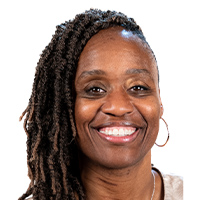“Equity” has always been more than just a trending buzzword. It’s an ideal to aim for, and educators and district leaders often know the “what” but not necessarily the “how.” A good start is to provide educators opportunities to check their biases and become aware. Then raise fundamental questions such as, “How should we provide access and opportunities to particular students, and what does that look like?”
In order to go beyond these questions and create a safe, inclusive space for students to learn, becoming aware of hidden biases, assessing teaching materials, and focusing on your students’ voices are three crucial steps that will open the flood gates to a better future for your teaching career and your students.
Recognizing Unconscious Bias
Often, we don’t realize that we have biases infused into our decision-making or the interactions we have with people. That’s why we call it “unconscious bias.” Becoming aware of hidden biases must be a conscious effort.
For example, an educator might view a Latinx student as disadvantaged if they assume English isn’t the primary language used at home and that that student will have a problem adjusting to English in school. The reality is that students having a second language under their belt is an absolute asset. They have another language to process, use to express themselves, and understand other languages. When educators become more awake to other students’ realities, they can take a step back to recognize strengths and step in to help struggling students.
Examining Your Teaching Materials
One way to help release bias is to look at the framework of your literacy curriculum with a new eye. Evidence-based methods are natural champions of equity in literacy because they use reading science to help students become skilled readers. When a literacy educator can break down the essential components of learning how to read—phonemic awareness, phonics, vocabulary, etc.—there really shouldn’t be room for bias.
All students enter the classroom with a different toolkit. No matter what that toolkit looks like, a science-based approach to teaching reading will meet students where they are and improve upon their foundation. As a school-level administrator and chief diversity officer of Reading Horizons, we use the supplemental reading program to incorporate the science of reading and to help students strengthen their foundation and expand their toolkit.
Becoming aware of how your students are learning is extremely important in the journey toward equity. Another side of that coin is examining the content of your teaching materials. Are there students and professionals represented from all walks of life? Based on your materials’ illustrations and messaging, will your students have a certain idea of what a successful student looks like versus an unsuccessful student? Do your third-party vendors have equity instilled in their company culture?
The answers to these questions might require educators to go outside their comfort zone or let go of familiar material to include different genres, authors, and general content.
Giving Your Students a Voice
You most likely understand the difference between active and passive listening. Two adults will maintain eye contact, nod in agreement, and show other signs that they are engaged and absorbing what the other is saying. They can work to withhold assumptions about how their student is feeling and be fully open and engaged in the moment. Anyone can benefit from working to suppress the habit of thinking of what they’re going to say in response to their student. Educators can listen to their student’s needs and then gather a relevant, thoughtful response.
The seemingly simple act of listening can exercise hidden biases—the habitual resistance to being open to others’ experiences. It’s not only what students are saying, it’s their unspoken cues as well. Educators can examine data: their test scores, students’ actions, and the subject matter they are struggling with are all forms of unspoken communication that teachers can use to better understand how a student learns best.
Educators can practice shifting their perspective to better understand their students. By becoming more aware of hidden biases, refreshing teaching tools, and being open to listening to students’ experiences, educators can begin to build a strong foundation for greater equity in the literacy classroom.

